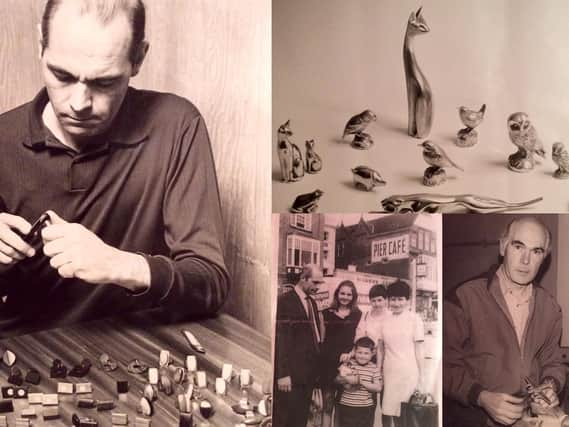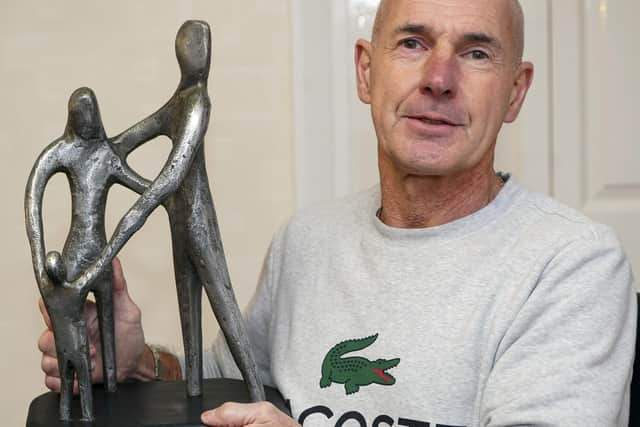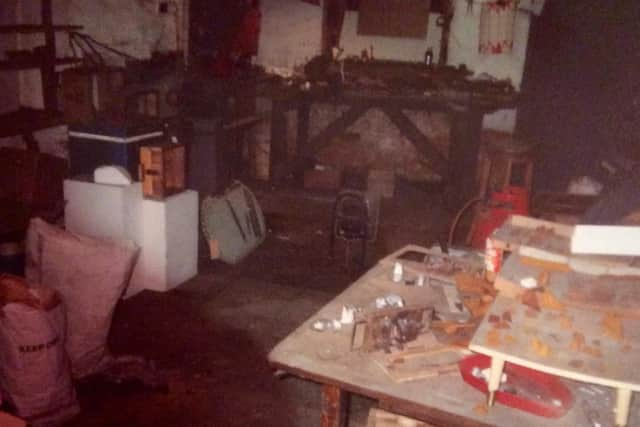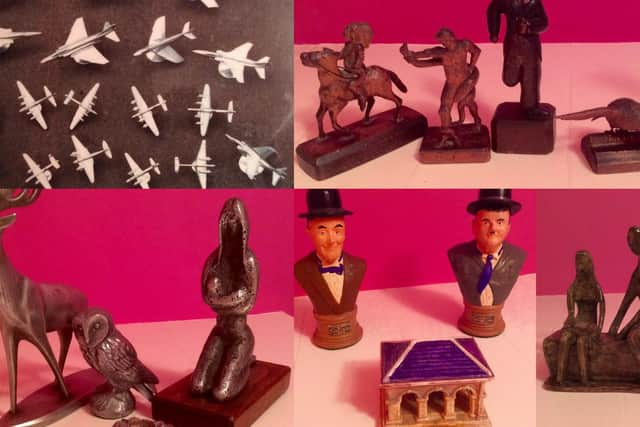The story of how a Pontefract sculptor turned his hobby into a livelihood that earned him recognition from royalty


Born in Glasshoughton in 1930, David had a natural talent for art and made his first carving of a war plane out of a piece of firewood at the age of 12, after seeing the planes flying over his house.
His interest in practical art would see curious David pursuing his newfound talent for creating, making models out of a range of materials from wood to aluminium.
Advertisement
Hide AdAdvertisement
Hide AdAfter he completed his national service, the young craftsman worked in many different occupations where he could develop his artistic skills, including a pottery shop in Ferrybridge, and dabbling in pattern making for iron works - all before becoming a self employed creative.


David’s son, Nigel Carter, has kept hold of many of his dad's staple collectors models today, some of which are seven decades old.
Nigel said: “I still have many of his wood carvings dating back to the 1950s, but then it was more of a hobby before it became his full time occupation.
“My dad was a very modest and quiet man with a right sense of humour - he was witty but had a good work ethic.
Advertisement
Hide AdAdvertisement
Hide Ad“In the early 1970s he started using aluminium metal to make models, mainly animals, pen holders and small dishes, he also produced many 'one-off' models for presentation awards.


“In the mid-1980s he started casting aluminium aircraft models. That's when his business started to take off.
“He had many requests for these models from ex-pilots, squadron leaders and numerous RAF bases.”
In the 1960s David bought a family home in Pontefract, near Halfpenny Lane, for wife Margot and a young Nigel.
Advertisement
Hide AdAdvertisement
Hide AdAbout a decade later, a newly self-employed David obtained his very own workshop called ‘the cottage workshop’ on Sterling Court , a place David could make his aluminium models by the batch by using a process called shell moulding.


Nigel worked with his father for a year at the workshops so got to see it before it was demolished to make way for flats.
Nigel said: “It was a right ramshackle old workshop, it wouldn’t have sat well with the health and safety rules and regulations of today!
“I remember it being really noisy in there, and there were lots of strong smells from the metal melting on the furnace. He reminded me of Fred Dibnah, but Dad never had any accidents.
Advertisement
Hide AdAdvertisement
Hide Ad“With him working for himself, he had no set hours. He was very much a workaholic and because we had a shed at the bottom of the garden he'd go there after work and he’d still be pottering around making his models.
“Planes were his speciality, they’d skill for around £35 each but he could make anything, he’s made a guitar, a few models of Pontefract Buttercross and animals like cats, owls and hedgehogs - which would sell for about £8 each and they were quite popular.
David’s independent work earned him recognition from royalty and film stars, receiving thank you letters from her Majesty The Queen, Sir Roger Moore and former Leeds United player, Mick Jones - who he’d all made models for.
Established for his enthusiasm, determination, a good eye and a steady hand, he was also asked to create a model plane by an aircraft enthusiast, who sent him some scrap metal from a Lightning aircraft.
Advertisement
Hide AdAdvertisement
Hide AdHe melted the material down and then made around half a dozen special limited edition models.
Nigel said: “Arguably I’d say he’s as good as local greats, like Barbara Hepworth and Henry Moore - his work has featured in exhibitions alongside them.
““He was advertised in magazines, and getting all these orders from all over England and Australia.
“I know he got a letter from Buckingham Palace after he’d made a bronze bell for the Queen, and a thank you letter from Roger Moore for a model he made for him, but my favourite was the signed photo of Mick Jones.
Advertisement
Hide AdAdvertisement
Hide Ad“Because he played for Leeds, my dad made him a model owl, and I remember how excited I was as a lad that one of my favourite players sent us a letter.
“It was amazing what he could do when he got into a new challenge.
“I’m confident that he could make anything he put his mind to, he made really good plaques and busts, he’d also draw, glaze and paint them himself.
“He had this amazing gift and in decades he’d made living out of it - obviously it wasn't all plain sailing.
Advertisement
Hide AdAdvertisement
Hide Ad"I’ve no doubt he had his knockbacks and at one point he had to get another job to tick our family over financially.
“But I am massively proud of him and all he’d achieved.”
All of his past creations have been branded with the words ‘D.P. Carter Pontefract’, his initials and hometown.
David stopped making aluminium models in about 2002 aged 72, but he still wasn't done - his desire to try something new led him to try his hand at ceramics.
He kept creating until he passed away in June 2016.
But his legacy lives on to this day with Nigel making a recent discovery that models that would have been sold for around £30 are now being sold online on a worldwide scale as collectors items for as much as £400.
Advertisement
Hide AdAdvertisement
Hide AdNigel said: “I was looking for dad’s work on antique sites, and I found one of his Running Jaguar models put on at a base selling price of £400.
“Some of his models are selling all over the world, a model of a Staffordshire bull terrier is currently on sale in Romania.
“In Amsterdam, someone was selling his ‘Madonna with Child’ abstract sculpture. It’s fascinating how people have got his stuff here, there and everywhere and it will remain a mystery as to how it got there.
“He never told me why put ‘Pontefract’ next to his initials on his models - he was probably very proud of his work and his roots.
“He’d lived in Pontefract most of his life, so maybe he did it to put our town on map in some way, all in all I think he just wanted to be recognised.”